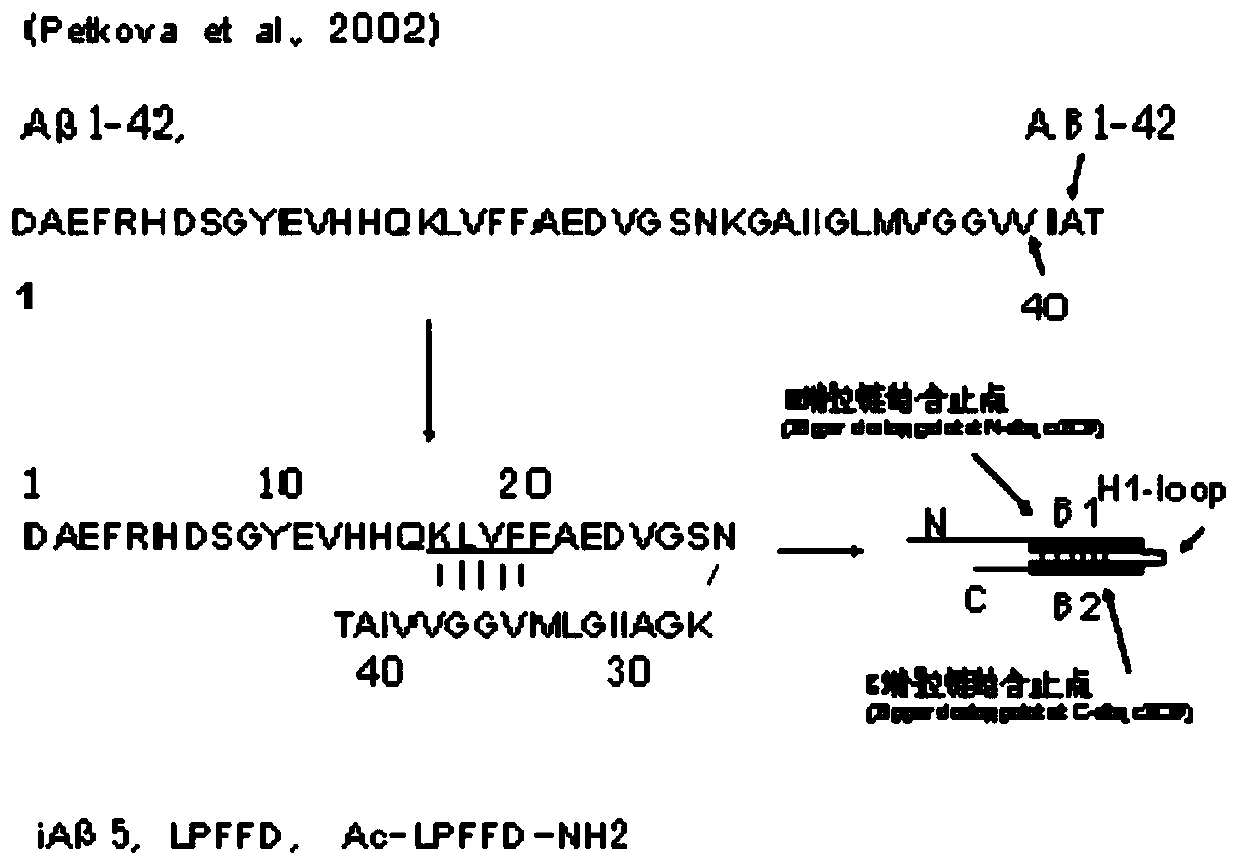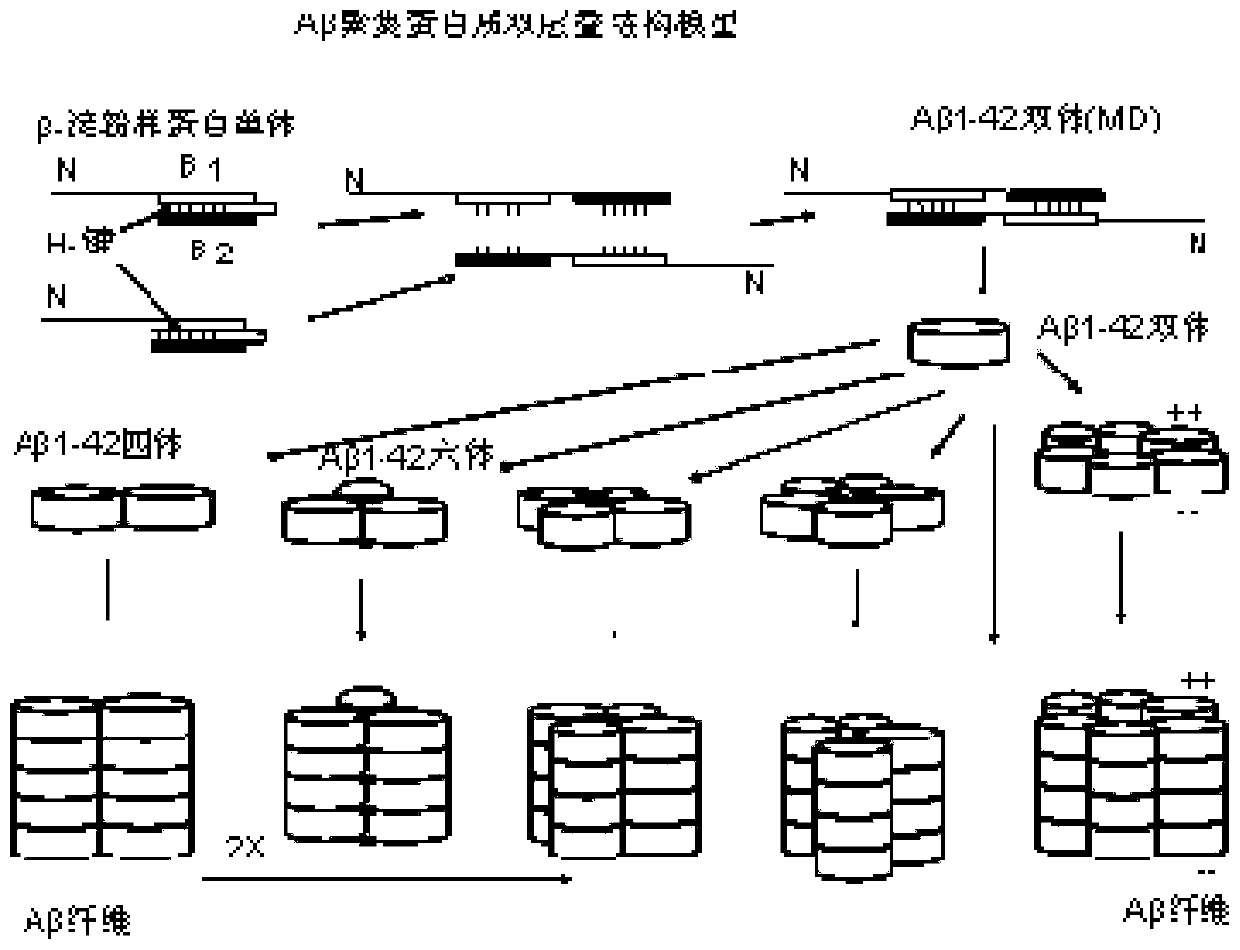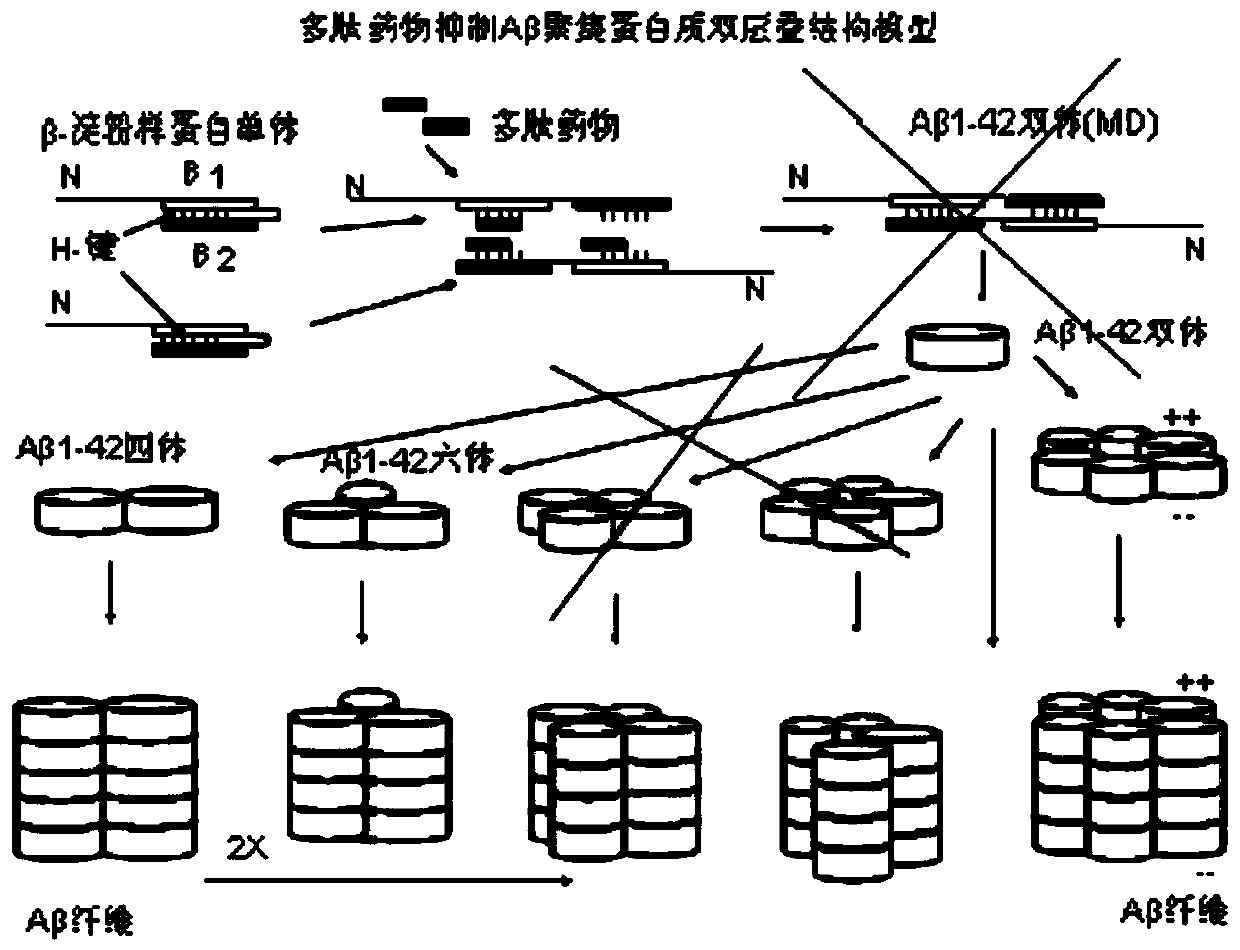Polypeptide drug for treatment of alzheimer's disease
A technology of a drug and a composition, applied in the field of polypeptide drugs for the treatment of Alzheimer's disease, can solve the problems of large side effects, unsafe, increased incidence of breast cancer, etc., and achieve the effect of prolonging the survival period and widening clinical application value.
- Summary
- Abstract
- Description
- Claims
- Application Information
AI Technical Summary
Problems solved by technology
Method used
Image
Examples
Embodiment 1
[0049] Example 1: Polypeptide Synthesis by Solid Phase Polypeptide Synthesis
[0050] Solid-phase synthesis, resin selection and activation treatment were purchased from Jill Biochemical (Shanghai) Co., Ltd.; take 1.5g of dichloro resin, add it to the reaction column soaked in DCM, soak in DCM 15ml for 30min to fully expand the resin to activate Stand-by; Weigh Fmoc-Cys(Acm).OH 0.31g to dissolve in DCM, then add 0.5ml DIEA to mix and add to the reaction vessel, blow N2 to react for 2hr, filter the reaction solution and add MeOH 5ml to seal the reaction for 1hr, then use DCM Wash with isopropanol and DMF 3 times; remove the amino protecting group, add about 15ml of 20% piperidine in DMF solution for 5 minutes, filter, then add 15ml and react for 20 minutes, wash the resin twice with isopropanol, and wash the resin 3 times with DMF; For the formation of peptide bonds, weigh 0.55g Fmoc-Trp(600)-OH, dissolve 0.35g TBTU in DMF, mix with 0.6ml HoBt (2mol / L) 0.2ml DIEA and add to the...
Embodiment 2
[0051] Example 2: Polypeptide Synthesis by Solid-Phase Polypeptide Synthesis
[0052] The peptide synthesizer adopts the American AB1431A model, and the peptide solid-phase synthesis, resin selection and activation treatment are purchased from Jill Biochemical (Shanghai) Co., Ltd. The N-terminal is acetylated, and the C-terminal is aminated. MBHA resin is used. Note that DIPF (deprotection reagent) cannot be added to the reaction kettle before using DCM. The reaction should not exceed 85°C. After the synthesis reaction, cut, precipitate with glacial ether, put in the refrigerator for 2 hours, and collect by centrifugation.
[0053] Peptide synthesis is actually a process of repeated addition of amino acids, generally from the carboxy-terminus (C-terminus) to the amino-terminus (N-terminus). In the past, peptide synthesis was carried out in solution. Now solid-phase synthesis has become a common method for synthesizing peptides and proteins. Many aspects of it cannot be achiev...
Embodiment 3
[0061] Example 3: Using Gene Recombination to Express Synthetic Polypeptides
[0062] Use genetic engineering technology to use probiotics and yeast to secrete and produce the polypeptide drug of the present invention, and use methods such as yogurt, solid drinks, beer, etc. to use probiotics and yeast to grow and reproduce in the intestinal tract to continuously secrete and produce various diseases. Preventive and therapeutic Peptide drugs. Apply genetic engineering technology to construct probiotics and yeast polypeptide drug and vaccine vectors, and clone antigen genes and cytokine genes to probiotics and yeast plasmids. After the transformation of probiotics and yeast, the peptide drug products containing the expression of the target gene are screened out and used as seed peptide drugs for cryopreservation, and the seed peptide drugs are scaled up for cultivation.
PUM
 Login to View More
Login to View More Abstract
Description
Claims
Application Information
 Login to View More
Login to View More - R&D
- Intellectual Property
- Life Sciences
- Materials
- Tech Scout
- Unparalleled Data Quality
- Higher Quality Content
- 60% Fewer Hallucinations
Browse by: Latest US Patents, China's latest patents, Technical Efficacy Thesaurus, Application Domain, Technology Topic, Popular Technical Reports.
© 2025 PatSnap. All rights reserved.Legal|Privacy policy|Modern Slavery Act Transparency Statement|Sitemap|About US| Contact US: help@patsnap.com



